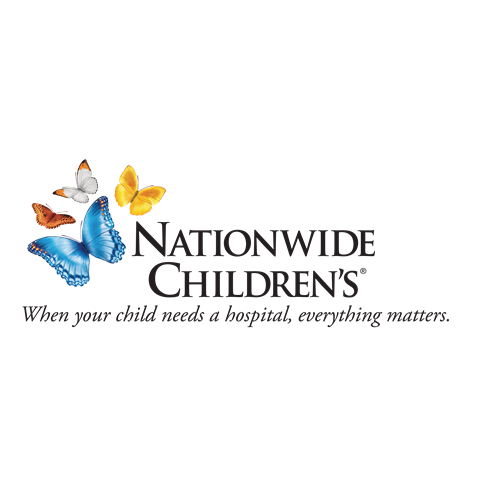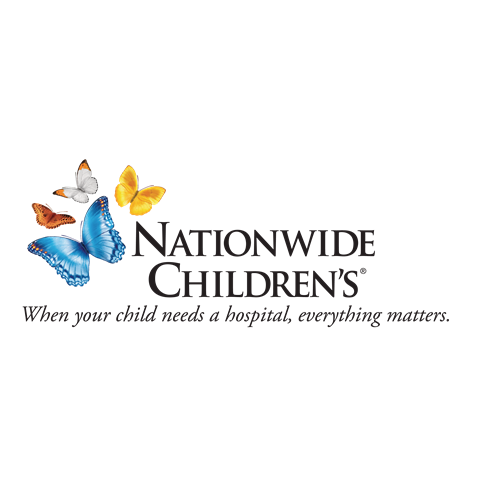Available Technologies
# of Displayed Technologies: 8 / 8
Applied Category Filter (Click To Remove): Research Tools/Clinical Tools/Other
Categories
 Machine Learning of Doppler Echocardiographic Coronary Blood Flow
Machine Learning of Doppler Echocardiographic Coronary Blood Flow
TS-001178 — Currently there are few existing methods on coronary flow pattern automation. The DECFA platform fulfills this unmet need by predicting diseased coronary blood flow by integrating previously unutilized data features from (sonographic) Doppler echocardiography measurements, cardiac functional and other physiological data (e.g. heart rate, body weight, etc) using machine learning. The DECFA program is superior to manual intervention as it provides more efficient analysis, more accurately, and can accept raw video files of PW Doppler and Color Doppler B-mode files, applicable on mouse models, potentially applicable to humans. DECFA can analyze raw PW Doppler AND Color Doppler B-Mode AVI video files to calculate overall coronary blood flow and coronary flow reserve, and the separation of each coronary flow pattern into 4 distinct phases representative of the stages in a cardiac cycle.
Benefits:
More efficient analysis over manual intervention, less error than manual intervention, capable of accepting raw video files of PW Doppler and Color Doppler B-mode files, applicable on mouse models, potentially applicable to humans (not yet validated). New features include the analysis of raw PW Doppler AND Color Doppler B-Mode AVI video files to calculate overall coronary blood flow and coronary flow reserve, and the separation of each coronary flow pattern into distinct phases representative of the stages in a cardiac cycle. The machine learning aspect brings state-of-the-art technology to determine whether it may be useful in directly predicting/diagnosing coronary microvascular disease.
Stage of Development:
We are currently in the final stages of completing the data analysis for all of the in vivo coronary and cardiac physiological parameters that will be used to perform the final runs through the machine learning process. We did perform an “interim” analysis using about half of the data, the results of which were promising (inconclusive at this point, but they put the predictive value of coronary flow patterns above 90% for identifying diseased coronary blood flow). This process also uses the whole envelope instead of discrete points of the coronary flow pattern, in addition to the texture-analysis extension. After this process is complete in mice, we plan to obtain human coronary blood flow patterns to determine whether this could be clinically useful beyond research applications.
Potential Applications/Markets:
Our program could be utilized in a research setting for robust, comprehensive, and more efficient analysis of coronary flow patterns in mice measured through Doppler Echocardiography (It solves the problem of large inter/intra observer error and time required for manual analysis). The program could also be used clinically for use in the medical field for the same analysis if adjusted for human use. It could also be used as an add on feature to the VisualSonics Vevo 2100 software for added capabilities in analyzing PW Doppler coronary flow patterns and Color Doppler B-mode files. The parameters that we identify in our program could be potentially useful in clinical diagnostics/machine learning/prediction modeling for better identifying and predicting disease.
Furthermore, we envision that this could be tested and applied to clinical coronary Doppler echocardiograms, with the readout being predictability of coronary microvascular disease based on the machine learning algorithm of coronary flow patterns.
Opportunity/Seeking:
Development Partner
Commercial Partner
Licensing
IP Status:
Know-how based
Copyright
- College:
- Inventors: Trask, Aaron; Bartlett, Christopher; Bossenbroek, Jamie; McCallinhart, Patricia; McDermott, Michael; Ray, Will; Sunyecz, Ian; Ueyama, Yukie
- Licensing Officer: Corris, Andrew
 Interdisciplinary Curriculum for Palliative Care
Interdisciplinary Curriculum for Palliative Care
TS-000844 — With the changing climate of online communication, it is imperative that all aspects of healthcare meet the new expectations of virtual care. Dr. Lisa Humphrey, the Director of Hospice and Palliative Medicine at Nationwide Children’s Hospital, has developed a video-based curriculum that includes a series of modules on an online platform to provide expert pediatric palliative and hospice care, as well as additional access to informative videos and expertise.
- College:
- Inventors: Humphrey, Lisa
- Licensing Officer: Corris, Andrew
 BELS: Behavior, Emotion, Learning and Social Evaluation
BELS: Behavior, Emotion, Learning and Social Evaluation
TS-000833 — Psychologist Natalie Truba and Harvard Medical School’s Molly Colvin have developed a new tool to screen and measure the emotional, behavioral, learning, and social needs of pediatric patients diagnosed with Duchenne or Becker muscular dystrophy. Both muscular dystrophies are progressive, inherited disorders that display as muscle weakness that impacts the child’s ability to stand and walk. The intention of the tool is to advise and guide providers who lack direct access to mental health providers during clinic visits. This screening provides recommendations for support, guidance, or for further investigation or intervention for triaging mental, behavioral, or learning concerns.
- College:
- Inventors: Truba, Natalie
- Licensing Officer: Corris, Andrew
 3D Clinical Image-Based Pre-Surgical Planning Tool
3D Clinical Image-Based Pre-Surgical Planning Tool
TS-000792 — By importing images acquired through minimal user interaction in a clinical setting, a virtual surgical simulator is possible. This program creates a combination of visual, haptic, and aural feedback that processes images to register anatomical structures as a 3D rendering. A research team found that this technology creates a three-dimensional display of realistic bone transparency, fluid simulation rooted in physics, and a constraint-based algorithm of the bone-drill interaction haptics. By implementing and optimizing CUDA and OpenGL graphics, the simulator has the capacity to maintain real-time rendering of large data sets. The user can upload their data, while the algorithm provides information for surgical planning and rehearsal. Current adaptations are for cochlear implants, as well as nasal and sinus surgery.
- College:
- Inventors: Wiet, Gregory
- Licensing Officer: Corris, Andrew
 A Field Guide to Navigating Multi-Site Project Management
A Field Guide to Navigating Multi-Site Project Management
TS-000747 —
A how to guide for beginner stage clinical research professionals and a refresher manual for seasoned research professionals engaged in multi-site study management.
A valuable component of clinical research is the training of the next generation of professionals. Director of Clinical Research Services, Dr. Grace Wentzel, and her team have developed an all-encompassing guide that serves as a manual to train and as a course to reestablish the skills and values in…
- College:
- Inventors: Wentzel, Grace; Bowers, Corinna; Sharpe, Samantha
- Licensing Officer: Corris, Andrew
.png) The Roadmap to Navigating Clinical Research: Your Survival Guide to Compliant Study Management
The Roadmap to Navigating Clinical Research: Your Survival Guide to Compliant Study Management
TS-000495 — Onboarding clinical research professionals can often be a daunting task. Boot camps and crash courses are expensive, site administrators have little time to develop homegrown programs and most rely on one-way learning platforms with little opportunity to ensure competence before study staff are expected to assume study management responsibilities. This may lead to challenges in study compliance and staff retention due to not feeling adequately trained. Our hope is that by offering what we have learned to others in a train the trainer concept, separated into 6 modules that it will enable sites to utilize this program to effectively onboard new staff across their organization.
Clinical research is the vehicle through which new diagnostics, therapeutics and prevention strategies are developed in the medical field. Researchers at Nationwide Children’s have designed an unmatched clinical research training program that provides an in-depth foundation in multi-site study…
- College:
- Inventors: Wentzel, Grace; Baker, Christine; Nofziger, Katlyn
- Licensing Officer: Corris, Andrew
.png) AAV Viral-Mediated Gene Therapy Pharmacy Training Manual
AAV Viral-Mediated Gene Therapy Pharmacy Training Manual
TS-000448 — Adeno-associated virus (AAV)-mediated gene therapy has emerged as a highly promising and efficacious therapeutic over the last decade. Despite the versatility, relative safety and popularity of AAV, several challenges remain that still impede its mainstream use in the clinic, one of it being unavailability of detailed pharmacy recommendations. Pharmacists at Nationwide Children’s Hospital have developed a pharmacy training manual that describes in-depth pharmacy procedures and expert opinions related to the handling and manipulation of viral mediated gene therapy. This document would allow the harmonization of pharmacy procedures between multiple sites in a clinical trial.
- College:
- Inventors: Blind, Jill; McLeod, Elizabeth
- Licensing Officer: Corris, Andrew
.png) Glass (Tissue) Slide Holder for Scraping
Glass (Tissue) Slide Holder for Scraping
TS-000427 — Glass slides are exclusively used for histopathological studies in biomedical research for tissue mounting purpose. Many downstream applications of these slides often lead to tissue/label loss and slide damage. Inventors at Nationwide Children’s Hospital have designed a glass slide holder with a unique design that reduces difficulty of scraping labels, keeps them still for experimental purposes and prevents breakage. This prototype glass slide holder provides safety and functionality for those working with glass tissue slides.
- College:
- Inventors: Arlington, Mitchell
- Licensing Officer: Corris, Andrew
